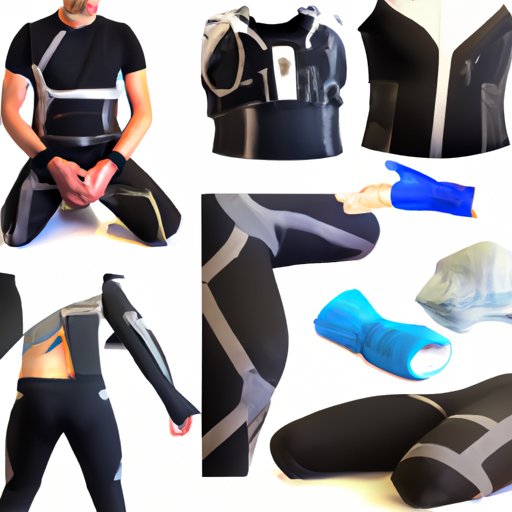Exploring the Myth: Can You Get Bruises from Working Out?
The idea of getting bruises while working out may seem far-fetched, but it is something that has been debated for years. While it’s true that bruises usually result from an injury, there are some cases where they can be caused by exercising. In this article, we will explore the myth of whether or not you can get bruises from working out.
Definition of a Bruise
A bruise is a type of injury that occurs when small blood vessels beneath the skin are damaged, which causes the area to become discolored. The discoloration can range from red to black, blue, purple, or brown, depending on the severity of the bruise. Most bruises will heal on their own within a few days or weeks, but severe bruises can cause swelling and pain for longer periods of time.
Common Misconceptions About Bruising and Exercise
Many people believe that you cannot get bruises from working out because exercise is supposed to be good for your body. However, this is not always the case. While exercising can help improve your overall health, it can also lead to bruises if you push yourself too hard or use improper form. Additionally, there are certain types of exercise that are more likely to cause bruising than others.
An In-depth Look at Bruising and Exercise
Before exploring the causes of bruising during workouts, it’s important to understand the different types of bruises that can occur. There are three main types of bruises that can occur from exercise: subcutaneous bruises, muscle bruises, and bone bruises. Subcutaneous bruises are the most common type of bruise and occur when the skin is injured, such as when you hit a wall or the ground. Muscle bruises occur when the muscles are damaged due to overuse or poor form. Lastly, bone bruises occur when the bones are bruised due to a direct impact or force.

Factors That Contribute to Bruising During Workouts
There are several factors that can increase the likelihood of bruising during workouts. One of the most common causes is over-exertion. When you exercise too intensely, it can put strain on your muscles and joints, which can lead to bruising. Additionally, poor form can increase the risk of bruising, especially with exercises involving weights. Lastly, a lack of a proper warm-up can lead to bruising since the muscles are not properly prepared for the activity.
Causes of Bruises During Workouts
In addition to the factors mentioned above, there are several other causes of bruises during workouts. One of the most common causes is over-exertion. When you exercise too intensely, it can put strain on your muscles and joints, resulting in bruising. Additionally, poor form can increase the risk of bruising, particularly with exercises involving weights. Furthermore, intense, vigorous exercise can also cause bruising, as the body is not used to the strain of the activity. Lastly, a lack of a proper warm-up can lead to bruising since the muscles are not properly prepared for the activity.

How to Minimize Bruising After a Workout
If you want to minimize your risk of bruising after a workout, there are several steps you can take. First, make sure to do a proper warm-up before each workout. This will help prepare your muscles and joints for the activity. Second, make sure to use proper form while performing the exercises. Poor form can increase your risk of bruising, so it’s important to focus on proper technique. Third, wear clothing that fits properly. Loose clothing can increase the risk of bruising, so make sure your clothes fit snugly. Finally, use protective equipment when necessary. If you are doing exercises that involve weights, make sure to use gloves or straps to protect your hands and wrists.

Exercising Safely to Avoid Bruises
The best way to avoid bruising from exercise is to exercise safely. It’s important to listen to your body and take breaks when needed. Additionally, if you have any questions about an exercise or its form, it’s best to consult with a professional. Finally, using protective equipment can help reduce the risk of bruising. By following these tips, you can minimize your risk of bruising and ensure that you stay safe while exercising.
(Note: Is this article not meeting your expectations? Do you have knowledge or insights to share? Unlock new opportunities and expand your reach by joining our authors team. Click Registration to join us and share your expertise with our readers.)
